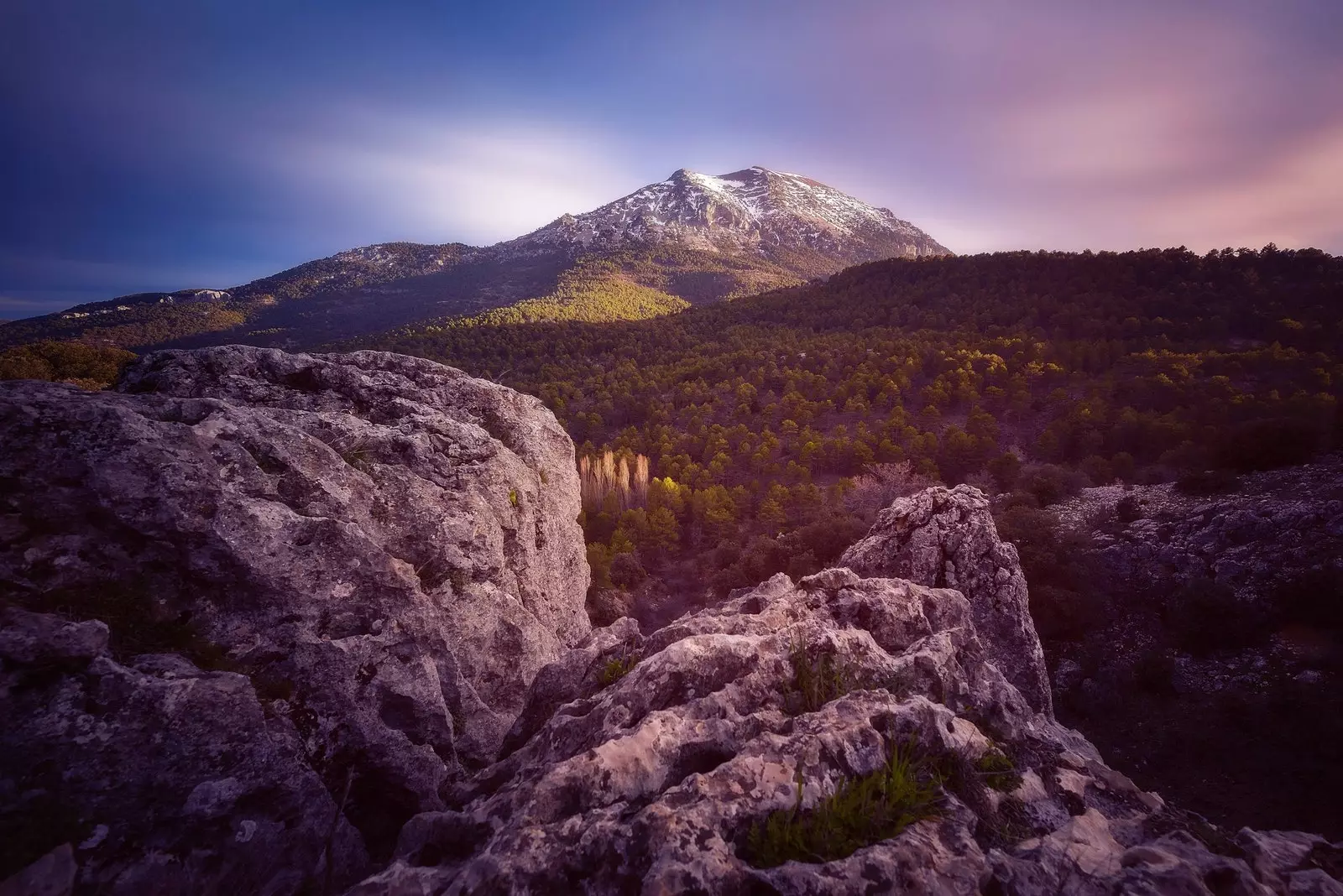
The Sagra, in Granada.
It is the highest peak in Andalusia after Sierra Nevada, but there are few who know this magical corner of the north of the province of Granada. Located at the back of the Cazorla and Segura mountains, La Sagra is a natural refuge where the mountain is accompanied by a natural network of 70,000 hectares where almost steppe vegetation alternates, pine and oak forests and towns with charm and their own personality.
IN THE SUBBETIC MOUNTAIN RANGE
When one thinks of the Betic Cordilleras, it surely comes to mind the Mulhacén –and its 3,479 m.a.s.l.– to the head. Without a doubt, this was the main name of the geography class dedicated to the mountainous systems of the southeast of the Iberian Peninsula. But, without seeking to downplay the highest peak on the peninsula, there is a little brother who perhaps went a bit more unnoticed in high school and who, however, is the king of kings when talking about the Subbética mountain range. With no less than 2,883 meters above sea level, La Sagra peak is the highest point that can be climbed in the known Granada Plateau.
It takes about four hours of walking to reach the peak of this colossus. It is said by those who decide every weekend put on your hiking boots and head towards La Sagra to enjoy a wild landscape that reaches a drop of 931 meters.
To face the rise it is best to approach its northeast slope, specifically to the Las Santas recreational area, to continue along the main track to the Refugio de la Sagra, where, at an altitude of 1,590 meters, you can rest or even spend the night before entering the wildest part of this peak through the path that starts at the Collado de las Víboras and that leads to a practically bare area and with snow most of the year. Without a doubt, the views from here are worth it, but also the dizzying descent down the west wall known as the Vertical Forest, where the gravel is the protagonist of a descent that the most daring choose to down zigzagging as if it were a ski slope.
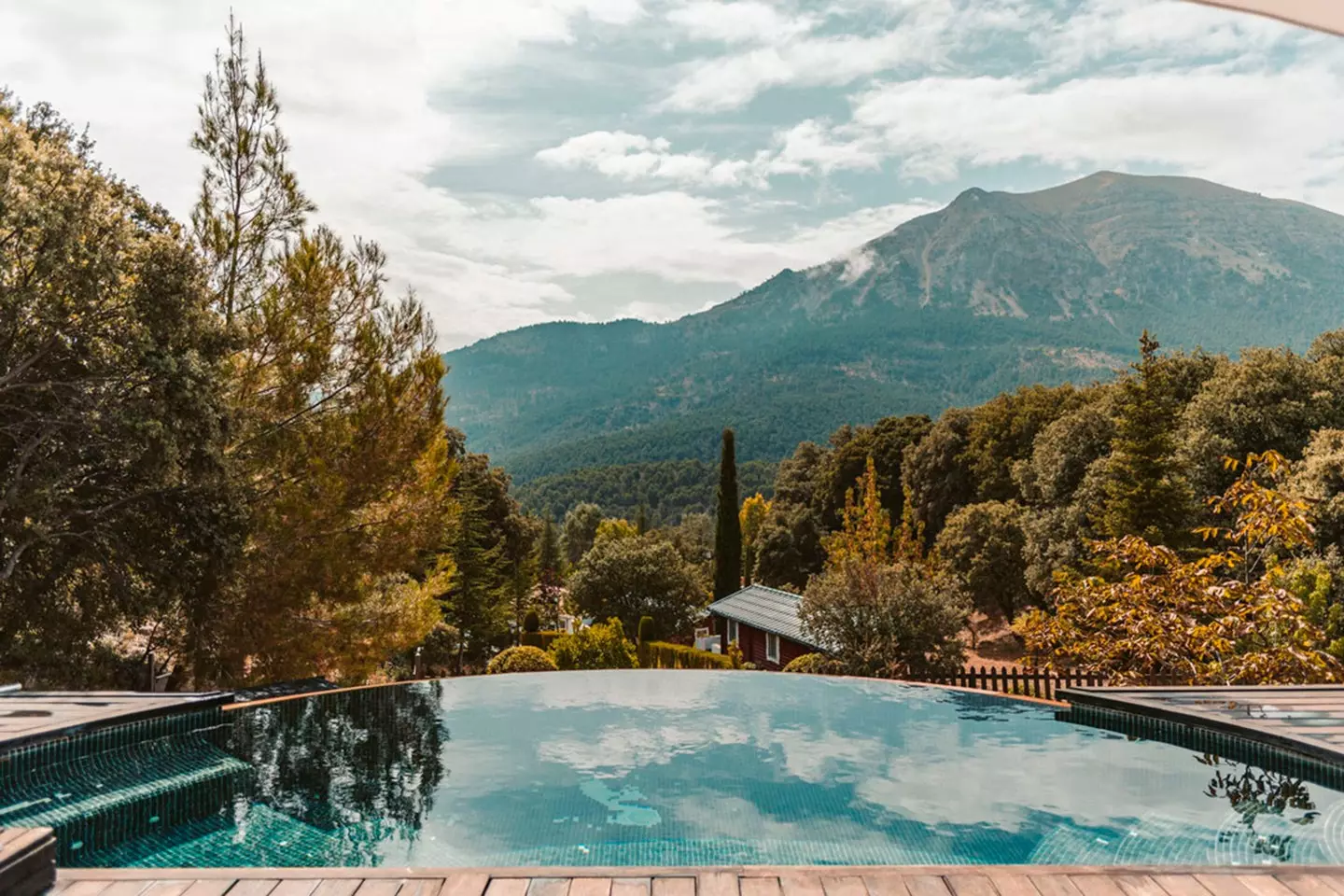
Views from the Cabaña de Collados de la Sagra.
THE OTHER ROCIERA PARTY
Back on earth, at the foot of the Sagra awaits the Hermitage of the Saints. Built by the Navarrese Christians who populated these lands after the Reconquest –in honor of the holy martyrs Nunillón and Alodía, already venerated in the Leyre monastery–, every Pentecost Monday in the hermitage a pilgrimage is celebrated from the neighboring town of Huéscar so that later the neighboring Puebla de Don Fadrique picks up the witness.
Because, as if it were El Rocío, in this hermitage in the middle of nature the exchange of the saints has been celebrated for centuries to solve a centuries-long enmity between two neighboring towns that claim for themselves the honor of having received the saints at different times in history. Every year they travel the 20 kilometers that separate Huéscar from the hermitage to leave the figures before midnight so that the neighbor welcome them in Puebla for forty days.
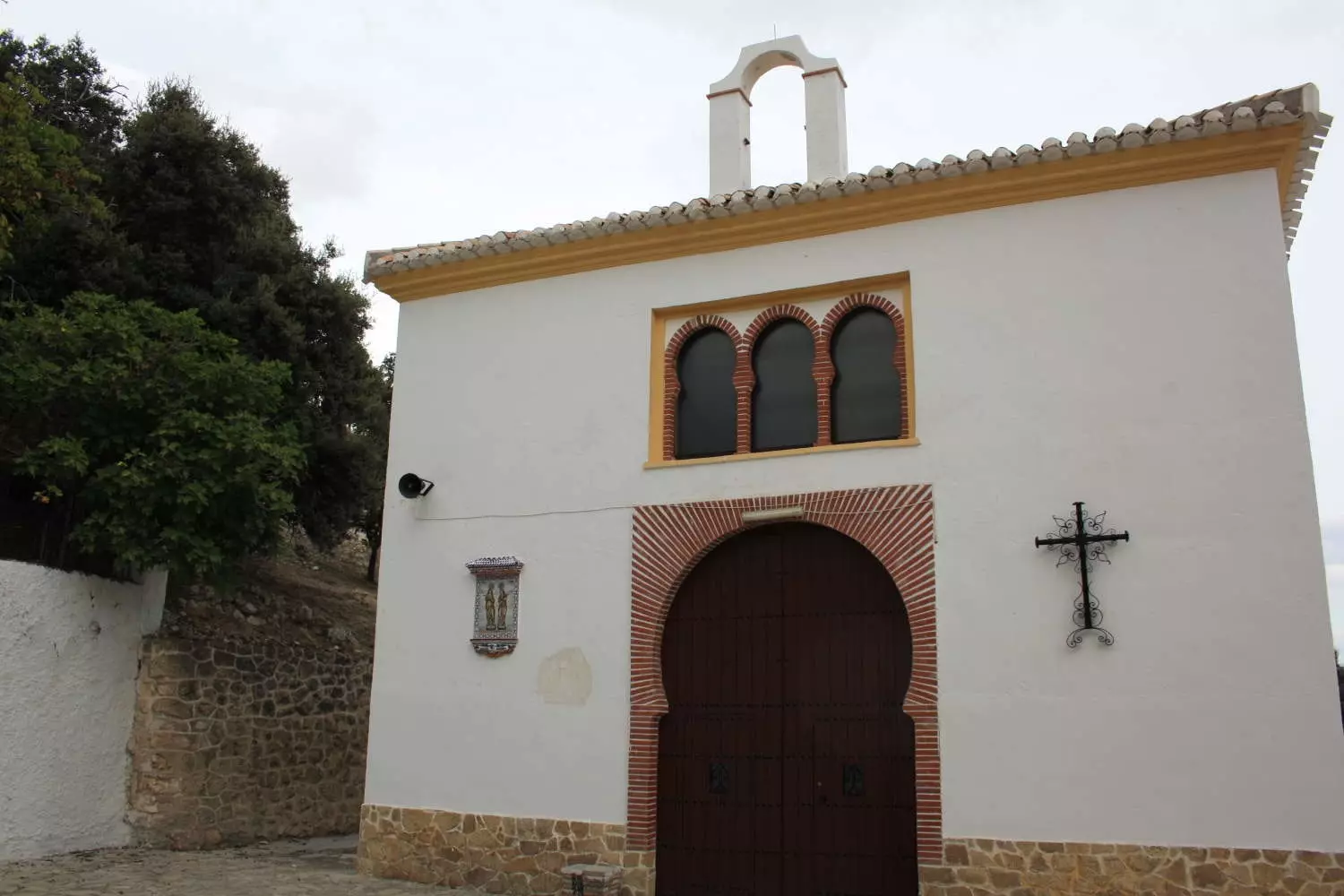
The hermitage of Las Santas, in Granada.
A CATHEDRAL LIKE THE ONE IN TOLEDO
From Las Santas, following a path of cypresses, you get to the mentioned Huéscar, one of the most important municipalities that make up this area included in the Altiplano of Granada. Its power dates back to the Middle Ages, to when the constable family of the Beaumont, originally from Navarra, repopulated the area with their Navarran neighbors. However, it has been another neighboring community your best ally with the passing of time. And it is that until 1953 Huéscar was part of the archdiocese of Toledo, just as its cathedral-sized church recalls.
The Church of Santa María la Mayor It began to be erected in the 16th century under the control of the Toledo cardinals Mendoza and Cisneros. Born to be an authentic cathedral which finally took two centuries to build, this Asset of Cultural Interest and National Monument inside it houses a choir stall similar to the Toledo cathedral and one of the Lignum Crucis that, together with the Cross of Caravaca and the Guadix Cathedral, articulate the so-called Spiritual Path of the South . Moreover, its importance on the religious map led it in 2009 to become Perpetual Jubilee Temple, that is, added to the Liberian Basilica of Santa Maria Maggiore in Rome.
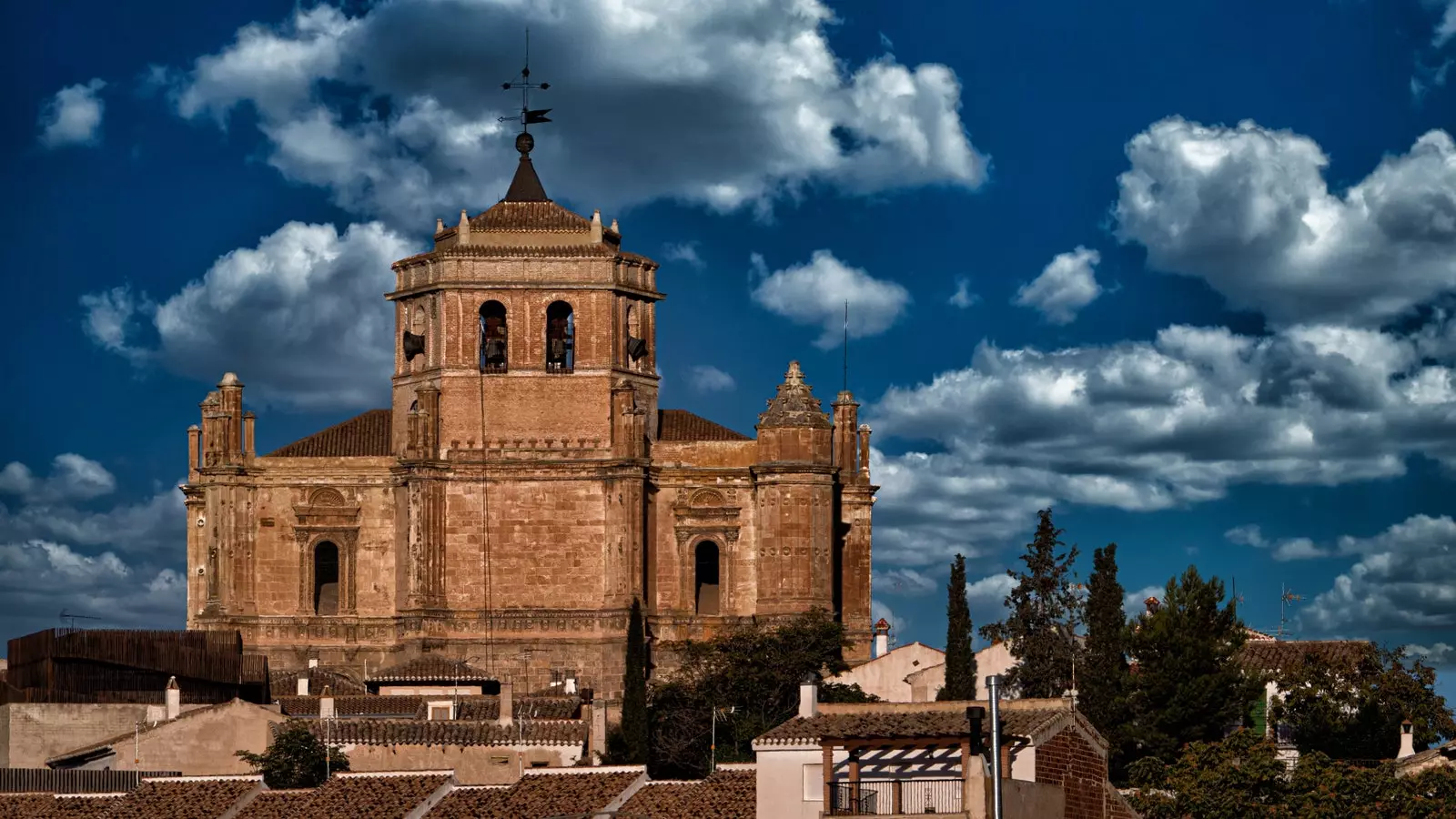
Collegiate Church of Santa María la Mayor de Huéscar.
THE PEOPLE WHO WERE AT WAR WITH DENMARK FOR 200 YEARS
and although this temple is a reference on the world map for many, Another much more mundane event took place four decades ago in Huéscar that really spread like wildfire. And never better said, because it was the year 1981 when it transpired that a small town in Granada and Denmark had just signed peace after two centuries of war. Obviously they hadn't been beating each other all this time, but both destinations had forgotten to give up. ended the conflict.
It all started when in 1807 Spain sent more than 13,000 soldiers to Denmark to help them prevent the landing of British troops on the Jutland peninsula under a treaty she had signed with France. The invasion of the Napoleonic troops led to the breakup of the alliance and, therefore, the Spanish soldiers stayed in no man's land. Neither short nor lazy, upon hearing the news, the city council of Huéscar declared war on Denmark on November 11, 1809. The defeat of Napoleon and the return of Ferdinand VII to Spain led to the event being completely forgotten until, four decades ago, a researcher found the original document of the aforementioned declaration of war in the municipal archives of Huesca. The news hit the media and reached Denmark, which did not hesitate to resolve the diplomatic conflict as it should be: with rigorously signed peace negotiations.
Thus, on November 11, 1981, just 172 years after the start of the war, the representatives of Huéscar and Denmark signed the document in Granada that put end to a century and three quarters of hostilities. A party in which more than ten thousand people, including Danes and people from Huesca, toasted the end of the longest and least bloody war in the war history of Spain that this 2021, in addition, will fulfill four decades of peace and, if the situation allows it, a new celebration.

View of Huéscar, at war with Denmark for 200 years.
COMIC LIFE
Leaving aside the joke, in Huéscar they are clear that tourism must be a motor of the locality and, for this reason, they have not hesitated to bet in recent years on creating points of interest such as the José de Huéscar Museum. Located next to the Torre del Homenaje –a rehabilitation project that has received several European awards and which you can climb to enjoy the views– awaits this cute museum dedicated to the comic artist with the same surname as the town.
Whoever emigrated to France in search of work in the 1970s would sign paintings made for the Larousse publishing house of L' Histoire du Far West, as well as Corporal Rusty, Rintintin the dog or the adaptation of The Adventures of Mowgli for the Vaillant publishing house.
before passing away, the artist donated all his artistic heritage to the people –not because I am from here, but by the grace of share surname with Huéscar–, that converted the Pósito dating from the 16th century into the current space that houses an archive with more than 1,000 works which are being exhibited on a rotating basis.
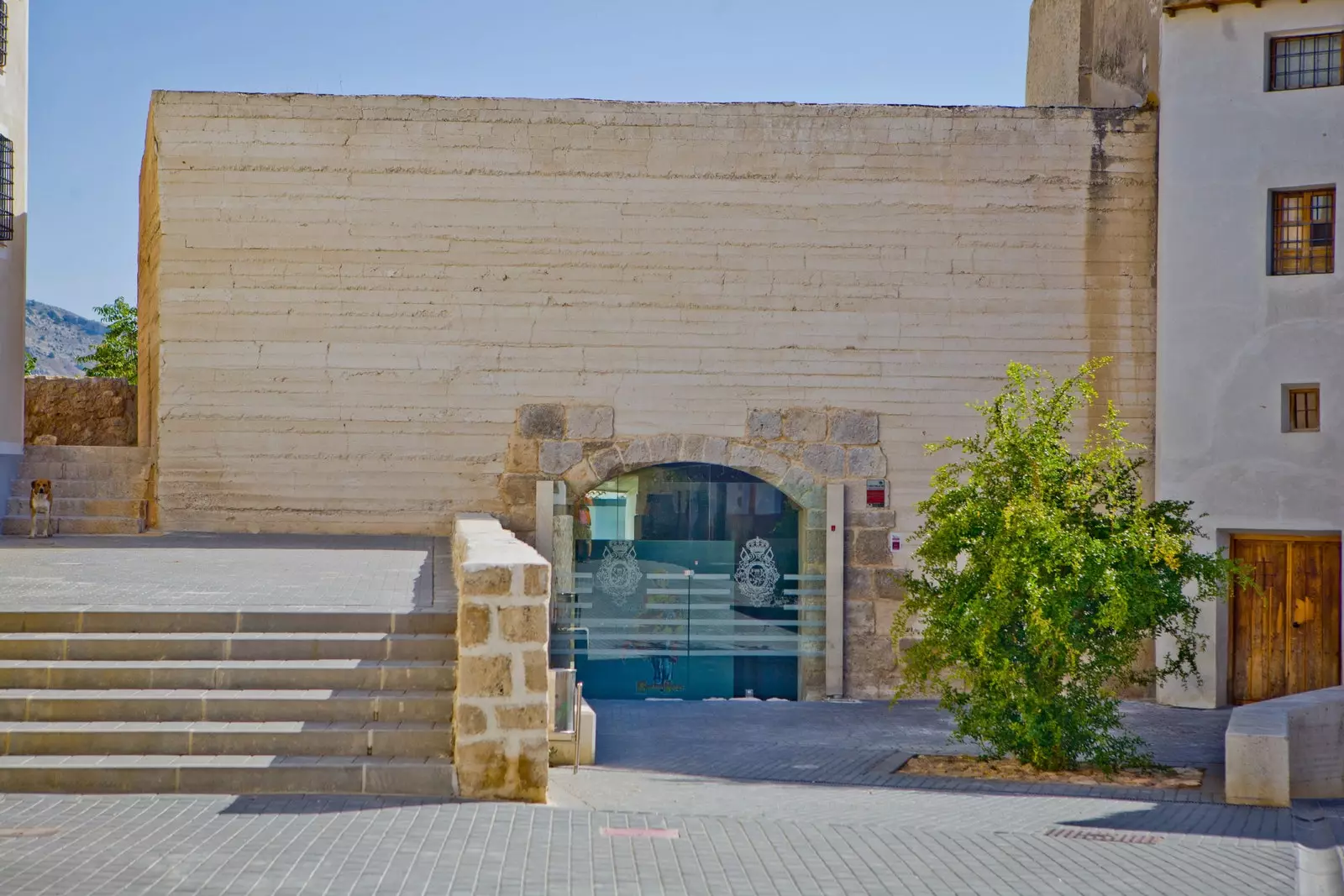
Comic Museum, in Huéscar.
A LAMB OF HEIGHT
Another important point to visit in Huéscar is the restored Franciscan monastery that houses the Segureño Lamb Interpretation Center (CICOS). Because if there is a star product in the region, it is this jewel with Protected Geographical Indication. It is common to find this native breed with pink meat and little wool in the surroundings peacefully grazing at minimum altitudes of 500 meters. Discover what makes it so special, the extensive and traditional model that is still valid today and the dishes that derive from it are possible in the chapels of the old church, where panels and interactive activities are displayed along with the remains of polychromy and even plasterwork from the original monastery.
Although, of course, there is nothing like trying such a delicacy. can be done by asking a traditional can of lamb –where the roast arrives in such a tin container accompanied by tomatoes, potatoes and onion– or simply finger licking at the chop. In the restaurant Alkadima, a bustling cave house with views of Huéscar, they never fail. In addition, in the kitchen they also dare with creations such as the lamb pizza.
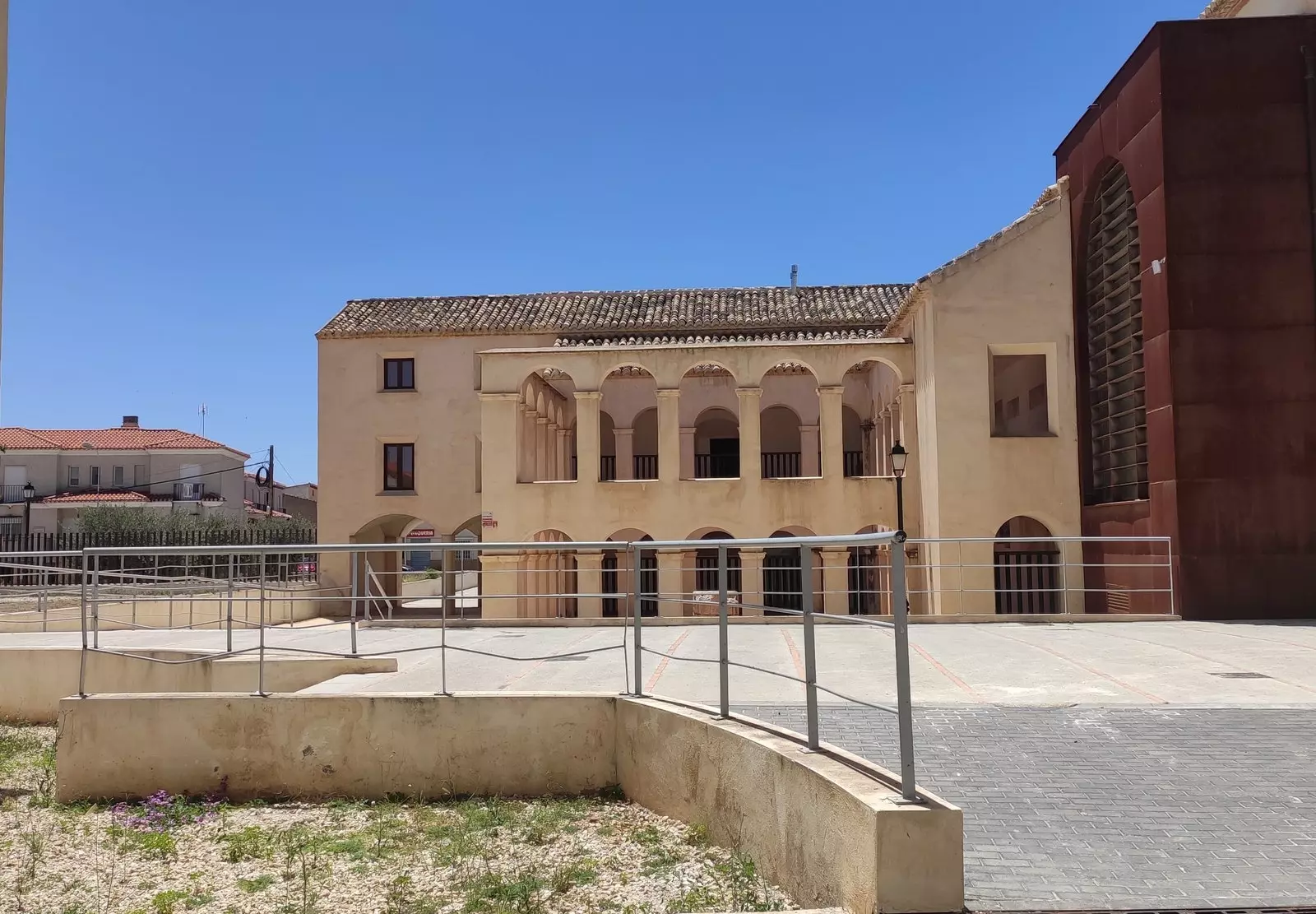
Segureño Lamb Interpretation Center, in Huéscar.
SLEEP WITH A VIEW
The restaurant never misses either. rural hotel complex of Collados de la Sagra, located at the foot of the peak that gave rise to all this walk, La Sagra. In this simple and charming little hotel with only 20 rooms and four independent Nordic cabins not only waits for absolute disconnection, but also an ode to good food and local produce.
Its gastronomic restaurant has become a reference in the area, being the Perla de La Sagra –stuffed lamb Collados style– its absolute specialty. There is also no lack of cava or Grilled lamb chops with poor potatoes and refried garlic sprouts along with an elegant selection of game meat and fish from the area. Needless to say that its cuisine has been recognized with awards such as the Marmita de Oro, the Club Gourmet Award and the Award for the Best Restaurant in Granada.
Another good option to rest in the cool of the Granada night awaits in the traditional cave houses. In Huéscar there is no shortage of options, and in the 1960s more than half of the census lived in these constructions born of stone. One of the best options –for its warmth and its views– awaits at the rural tourism complex La Atalaya, where ten caves coexist in peace and harmony in an aura of peace and silence and temperatures between 18-20 degrees whatever time of year it is.
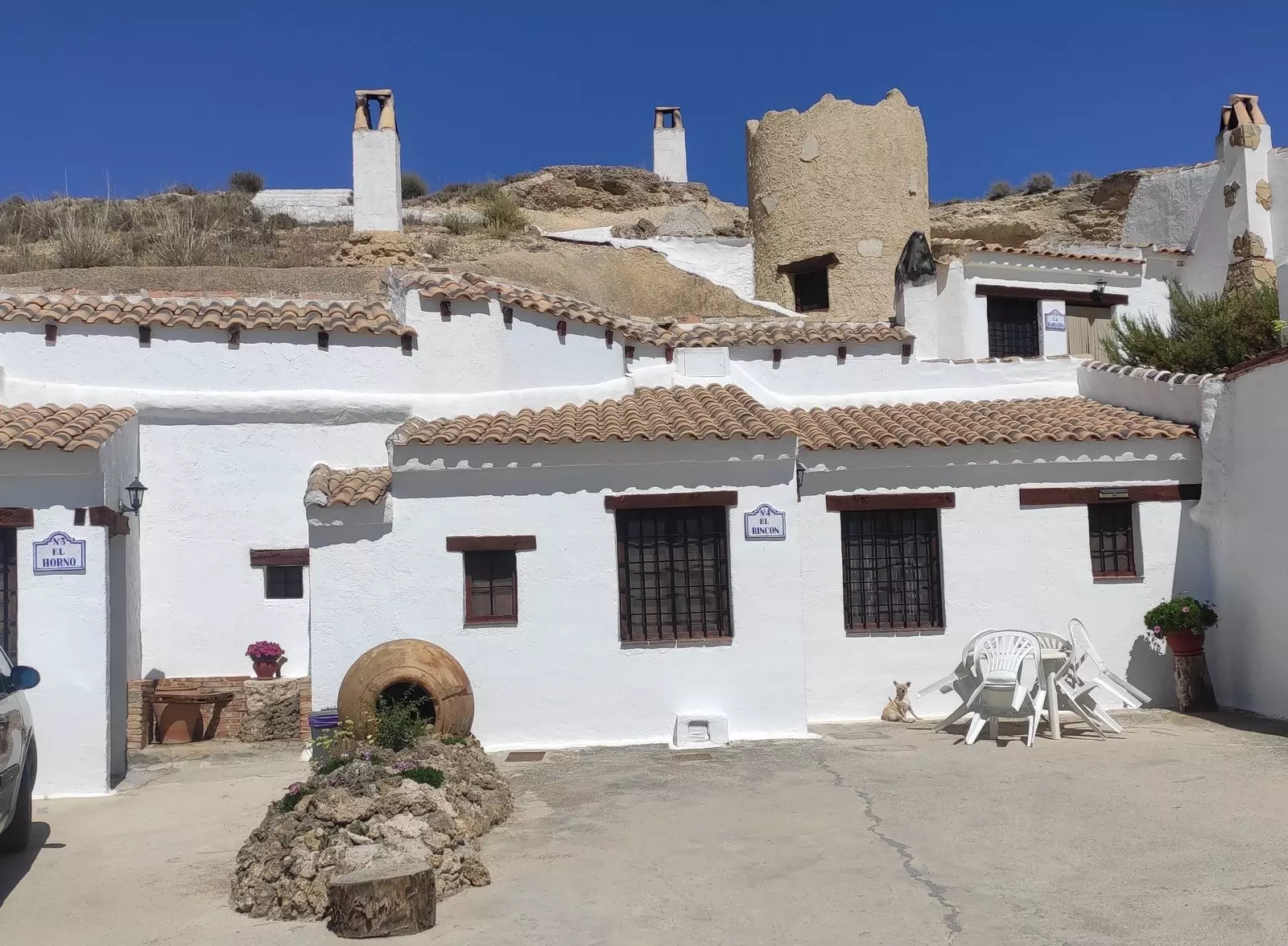
La Atalaya rural tourism complex.
GET LOST AMONG THE REDWOODS
With a full stomach and a rested body, the journey through this –not so– unknown area of Granada leads inexorably to the piece of Yosemite that awaits at the foot of the Sierra de la Sagra. Specifically, they have been planted for nearly 180 years eleven sequoias that reach heights of up to 50 meters high at the La Losa estate.
Which is one of the few redwood forests that exist in Europe came to this farmhouse owned by the Marquises of Corvera almost two centuries ago and can be toured today to the delight of all by arranging a guided tour. Without a doubt, there is no better plan than feel the rough and beautiful trunk of some specimens that, although they are still young here, are record-breaking, since North American redwoods live between 1,200 and 1,800 years and reach heights of 115 meters.
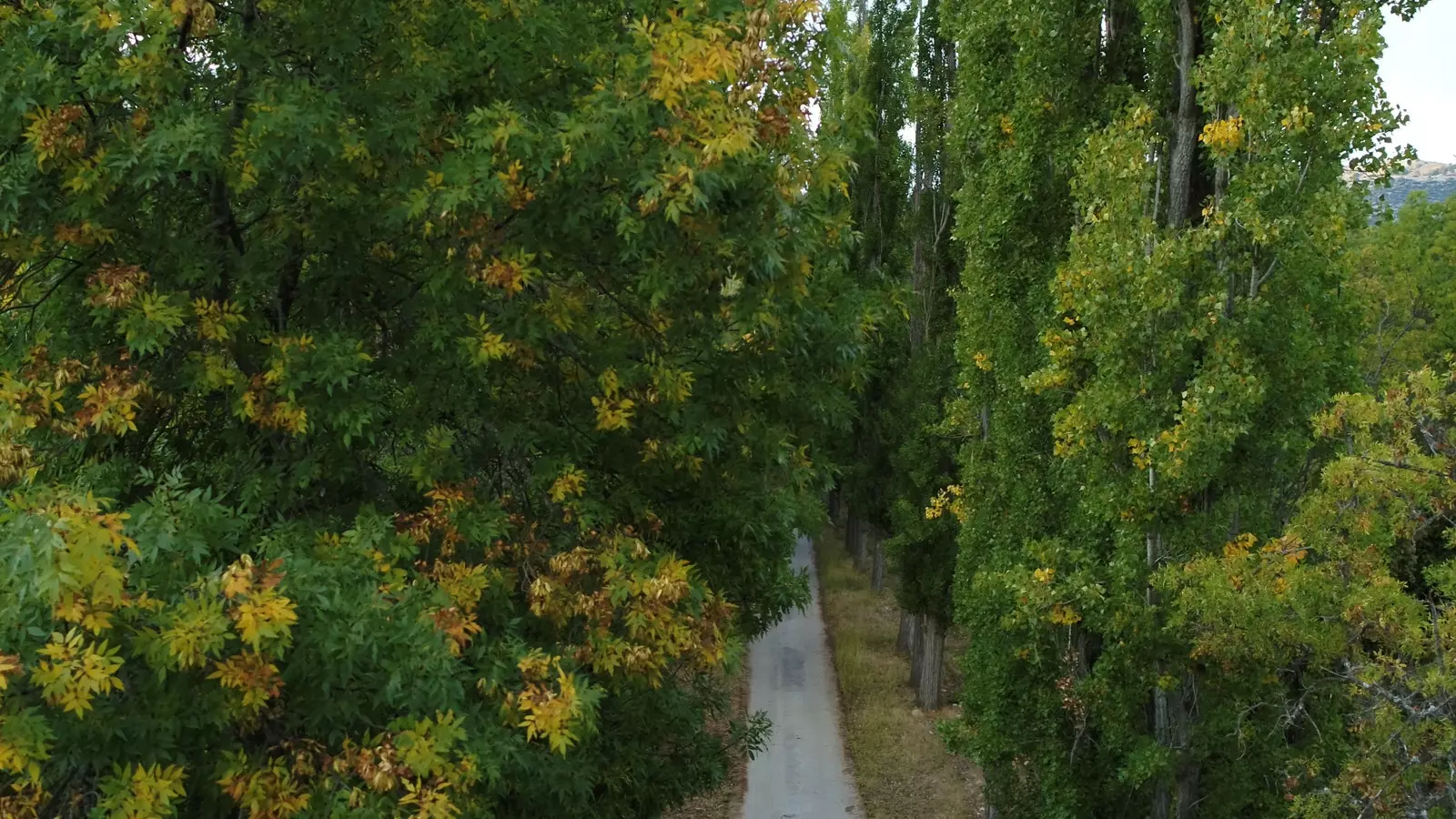
The sequoias of La Sagra, in Granada.
BETWEEN FISH FARM AND MOUNTAINS
La Sagra has become part of the European Network of Protected Natural Areas –Natura 2000 Network– recently and with good reason. In its surroundings await beauties like the sources of the Guardal river, a complex formed by springs of crystal clear waters located northwest of the great peak, specifically in the foothills of Sierra Seca, where it is possible to take a bath and enjoy the noise produced by fresh water that falls in elegant earrings.
To get to this complex, you includes a fish farm, where it is possible to practice fishing, and a natural recreational area, can be accessed from the San Clemente reservoir or from the aforementioned La Losa farm, path that allows you to discover the bridge of Las Ánimas and part of the channeling works that Carlos III tried to carry out to connect the sources with the port of Cartagena.
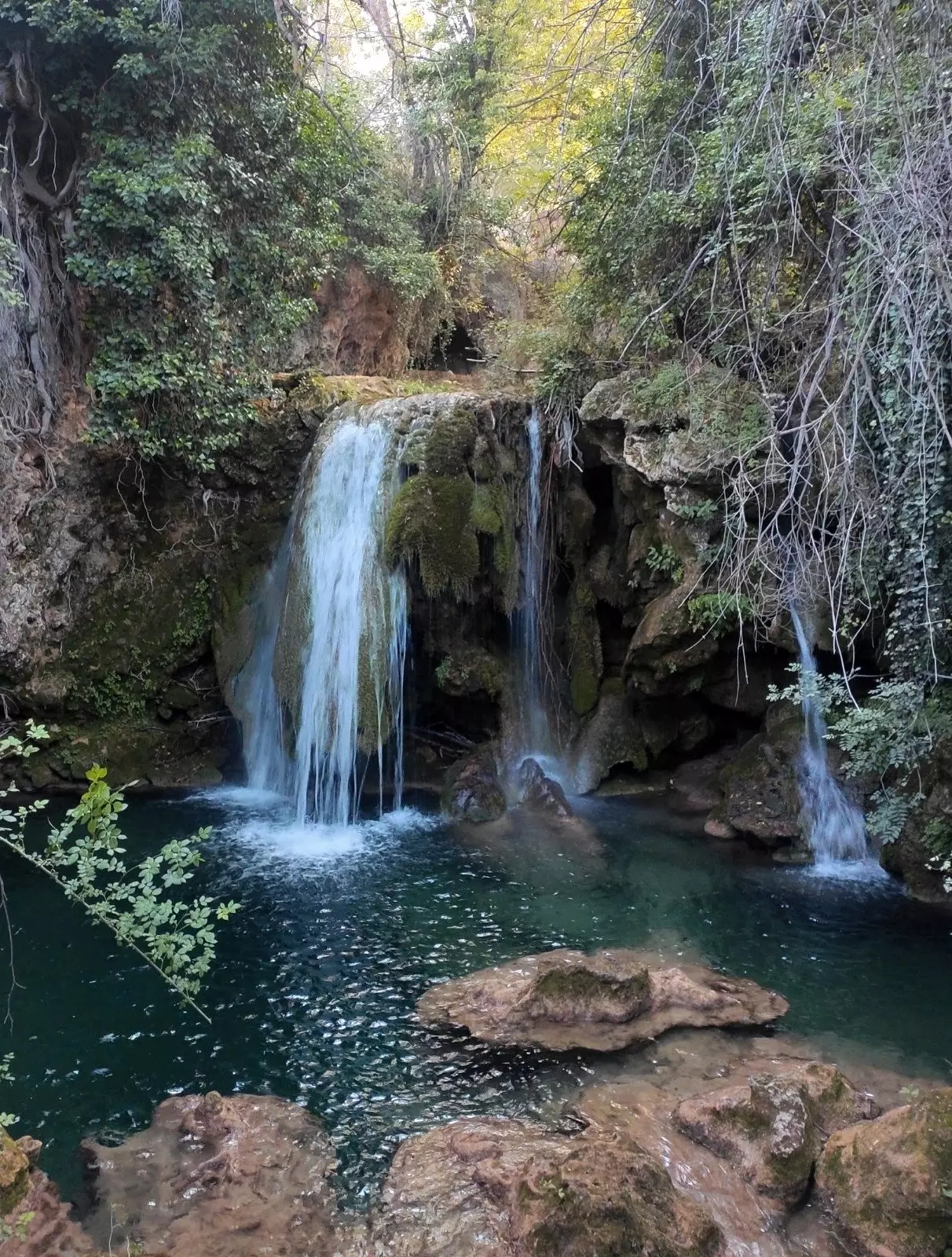
Sources of the River Guardal.
The water hooks, but it is worth continuing to ascend to the highest part of Sierra Seca to discover one of the best viewpoints in the entire area: Bull Rock. Although the path here is not particularly easy, the natural separation of the municipalities of Huéscar and Castril ensures unique views of the surroundings. Of course, La Sagra presides over the panorama where you can also capture, with luck, lambs grazing in the meadows, deer jumping down the steep climbs and a lagoon made up of rainwater and melting ice at more than 2,000 m.a.s.l.
